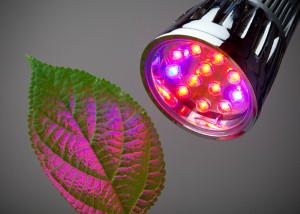LED lighting development proves commercial applications of the technology
LED lighting development proves commercial applications of the technology
It's not just around the home that LED lighting can provide illumination, as recent developments in grow lighting can attest.
Since their launch in the early '00s, LED grow lights - those used to encourage sensitive plants to flower, in laboratories and sheds alike - have shared the same misconceptions as commercial LED lighting, thought to be too weak or inconsistent to fully flourish.
But as developments in the technology have continued apace, the new Hydro Grow X2 LED Grow Lights have proven to be a success in the field of horticultural lighting, with nifty developments in the angled fixtures that hold the LEDs resulting in a 569 per cent increased output increased over standard 90-degree angled counterparts.
And as the more commercial solutions in LED lighting such as these continue, so they will be reflected in homes.
The announcement that the X2 Grow Lights are set to make waves in production of small-scale crops and specialist planting comes in a landmark year for horticultural LED lighting, as graduate student Erico Rolin de Mattos was recently awarded a scholarship to develop his idea that could have positive repercussions for millions of starving people.
The University of Georgia engineering student, who originally hailed from Sao Paolo, pitched his vertical farming idea to the Silicon Valley Singularity University competition, and scooped the top prize - a $30,000 (£19,000) scholarship - off the back of it.
According to demographic experts, the earth's population could explode to hit ten billion by the year 2050 - many of which will be born into poverty. The impending problem puts the onus on crop production, but up until now, tests with LED lighting and vertical farming (an artificial solution to vanishing agricultural land available) have been unsuccessful.
Erico's idea is to use circuits to monitor and distribute the heat build-up in the lamps used to encourage photosynthesis, making the system more cost-effective and boasting greater yields.
"It's like the plants and the lights are talking," said Mattos.

